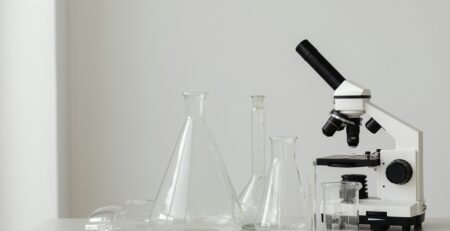29
Aug
Class A vs Class B Measuring Cylinders – What’s the Difference?
Measuring cylinders are essential for volume measurement in any laboratory, but not all cylinders are created equal. The distinction between Class A and Class B accuracy is critical for ensuring reliable results, whether in education, research, or industry.
Accuracy Standards Explained
According to ISO 4788 and ASTM E1272, measuring cylinders are classified into Class A and Class B based on tolerance levels.
- Class A Cylinders – Highest accuracy with tighter tolerances, often ±0.5–1.0 mL depending on capacity.
- Class B Cylinders – Lower accuracy, typically with twice the tolerance of Class A.
This means Class A is preferred for quantitative research, while Class B is sufficient for routine or educational use.
When to Choose Class A Cylinders
- Research and clinical labs where precision matters.
- Quality control (QC) testing in pharmaceutical and industrial settings.
- Calibration work where reproducibility is essential.
Class A cylinders often feature blue graduations for enhanced readability and may come with individual calibration certificates for compliance.
When to Choose Class B Cylinders
- Teaching laboratories where durability and cost-effectiveness are priorities.
- Routine solution preparation where approximate accuracy is acceptable.
- Fieldwork applications where portability outweighs absolute precision.
While less accurate, Class B cylinders still provide reliable measurements for most day-to-day lab applications.
Lab Anecdote
At a Perth-based biotech startup, researchers initially used Class B cylinders for solution prep. During a scale-up phase, they switched to Class A and noticed improved reproducibility in enzyme assays. The slight cost difference was outweighed by the reduction in repeat testing.
Sustainability Insight
Both Class A and B measuring cylinders made from BORO 3.3 borosilicate glass are reusable, recyclable, and long-lasting. Choosing glass over disposable plastics not only reduces environmental impact but also lowers long-term replacement costs for Australian labs.
FAQs
Can Class B cylinders be used for research?
Yes, but they are best suited for non-critical measurements. For research-grade work, Class A is recommended.
Are plastic measuring cylinders as good as glass?
Polypropylene cylinders are durable and acid/alkali resistant, but they lack the heat resistance and clarity of borosilicate glass.
Do all Class A cylinders come with calibration certificates?
Not always. Look for ISO 4788-compliant products if certification is required.
Comparison Table – Class A vs Class B Cylinders
| Feature | Class A Cylinder | Class B Cylinder |
|---|---|---|
| Accuracy Tolerance | High (ISO 4788, ±0.5–1.0 mL) | Lower (twice Class A tolerance) |
| Cost | Higher | Lower |
| Best Use | Research, QC, calibration | Education, routine prep |
| Sustainability | Reusable BORO 3.3 glass | Reusable BORO 3.3 glass |
References
- ISO 4788: Laboratory Glassware – Graduated Cylinders
- ASTM E1272: Standard Specification for Cylinders
- University of Queensland – Lab Equipment Selection Guide
- CSIRO – Sustainable Science Practices

